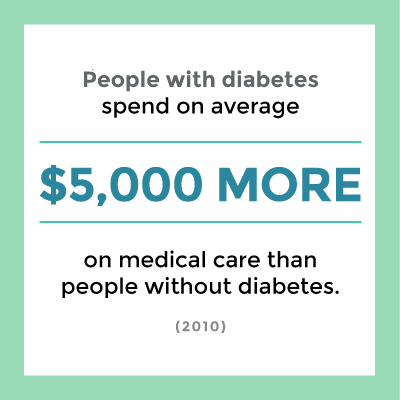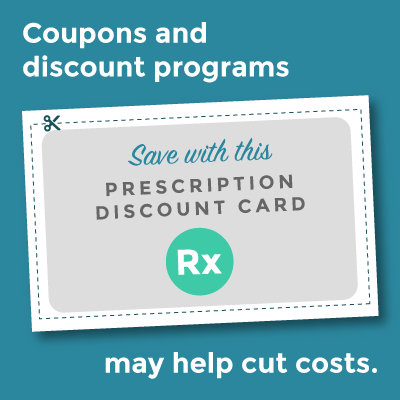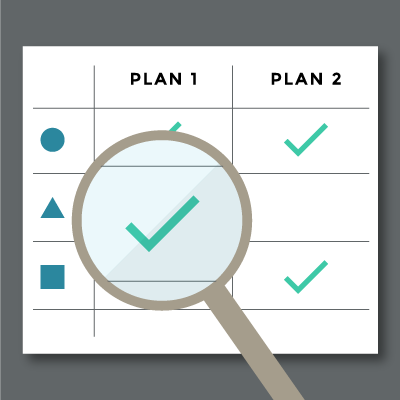10 Ways to Save Money on Diabetes Care
By Emma Ryan
By Emma Ryan
How to get cheaper drugs, find discount programs, get free care in clinical trials, and more
Editor's note: This article was updated in December 2019.
Leer este artículo en español.
 Even for those with insurance, diabetes can be expensive. In 2017, the average person with diabetes in the US spent 2.3 times more on medical care than people without diabetes. As a result, nearly 1 in 7 adults with diabetes ages 18-64 years did not take their medication as prescribed in 2017-2018 to save money. How do you save money and still get the drugs, devices, and care you need? Though finding ways to spend less on diabetes care can take extra time and research, the savings may be worth the extra effort. Read on for ten top tips from the diaTribe team!
Even for those with insurance, diabetes can be expensive. In 2017, the average person with diabetes in the US spent 2.3 times more on medical care than people without diabetes. As a result, nearly 1 in 7 adults with diabetes ages 18-64 years did not take their medication as prescribed in 2017-2018 to save money. How do you save money and still get the drugs, devices, and care you need? Though finding ways to spend less on diabetes care can take extra time and research, the savings may be worth the extra effort. Read on for ten top tips from the diaTribe team!
Note: this content is primarily US-based, as many of the cost-saving strategies below focus on US pharmacies, programs, and insurance systems.
1. Compare pharmacies to find the least expensive prescription drugs
Medication prices can vary greatly among pharmacies, so your local pharmacy may not offer the best value. For instance, 60 tablets of metformin purchased through Costco is $13, compared to $21 at CVS (as of our latest check). If you are not using insurance to cover the cost of medications, websites like GoodRx, LowestMed, and WellRx and others can locate the lowest price for a specific drug among pharmacies in your city.
To save on medications with insurance, ask your healthcare team about mail orders to fill prescriptions instead of going to a pharmacy counter – although you won’t have the benefit of pharmacists, you may find that this is better for your care. Ask your doctor about online pharmacies, which may have lower copays than traditional pharmacies as well. However, do check with your healthcare team to make sure you can ask them extra questions that you won’t be able to ask your pharmacist.
.png) For online pharmacies, use sites like LegitScript to check if the pharmacy is legal, legitimate, and trustworthy.
For online pharmacies, use sites like LegitScript to check if the pharmacy is legal, legitimate, and trustworthy.
2. Purchase supplies and healthy foods in bulk
Purchasing larger quantities of diabetes supplies like glucose meter strips from online wholesalers may be less expensive than buying smaller quantities as needed. If purchasing in bulk from retailers like Amazon (Amazon now has their own line of strips!), keep in mind that many supplies have expiration dates and may be sold by third parties (i.e., not the manufacturer). Read reviews carefully, make sure supplies are in their original packaging, and always check expiration dates.
Similarly, buying foods that keep your blood sugars in range can be made more affordable by purchasing from bulk stores like Costco, online retailers like Amazon, or from local markets. Some of Adam Brown’s favorites are chia seeds, broccoli or cauliflower rice, and turkey zucchini burgers. A handful of berries are an especially great low-carb, low-sugar option for fruits, and they freeze very well.
.png) Freeze fruit and vegetables if you don’t plan to eat these items right away (check out this guide on how to freeze almost anything).
Freeze fruit and vegetables if you don’t plan to eat these items right away (check out this guide on how to freeze almost anything).
3. Find diabetes education near you and focus on TODAY benefits – why does taking care of your diabetes matter?
Learning about what you can do to keep your blood sugars in range today can help you avoid significant costs down the road that could prevent you from seeking medical care. Fortunately, there are affordable options to help you learn to be more active in your day-to-day diabetes management. Group education is often less expensive than one-on-one visits with your physician. Go to the American Association of Diabetes Educator’s (AADE) website to search for programs near you that are covered by Medicare and most health insurance plans.
Cooking Matters offers free, six-week long cooking and nutrition courses, as well as shorter programs through local partners in about 40 different states. It also provides chef-developed, healthy recipes with full nutrition information and money-saving tips for grocery shopping through its website and mobile app. The recipes are all based on a $10 budget, and at the end of each class, participants take home a bag of groceries to practice the cooking the meals taught that day.
In addition to improving short-term quality of life, lifestyle changes can help minimize long-term costs of medical care. As diaTribe’s Adam Brown explores in Bright Spots & Landmines, focusing on immediate benefits to in-range blood sugars like improved mood, energy, and relationships is one tool for staying motivated today. Adam suggests getting at least seven hours of sleep and walking after meals to correct high blood sugars as simple first steps to feeling better in the short-term.
4. Consider joining a clinical trial
Clinical trials test in-development or approved drugs and devices. In addition to contributing to important research, joining a clinical trial may allow you to receive free care or supplies, depending on the study. Use diaTribe's clinical trial match tool, which takes you through a matching process based on condition, location, age, etc. Always talk to your doctor if you’re considering joining a clinical trial.
5. Have a conversation with your healthcare team about lower-cost options
You may have the option to switch to a generic, less expensive version of your drug, but it is worth noting that many “branded” drugs have benefits such as less hypoglycemia and weight loss promotion (drugs without generic equivalents tend to be newer). Although there are not many generic drugs for diabetes, your prescriber may be able to switch you from brand-name metformin to a less-expensive, generic version of metformin.
If taking multiple drugs, another strategy is to ask whether you can get a combination (the drugs combined into one pill) – it may be cheaper for you. Conversely, if you are already taking a combination drug, check if the combination drug costs more than purchasing both drugs individually.
One way to compare copays on prescription drugs is to contact the pharmacy you would use to pick up your medications and inquire about pricing under your insurance plan.
It goes without saying that you should always consult with your doctor or healthcare team when considering changes to treatment plans.
6.  Use coupons and discount programs
Use coupons and discount programs
In the United States, pharmacy discounts are available to help cover drug costs. Programs like Blink Health, Inside Rx, and GoodRx have no membership fees, obtain discounts through avenues like direct partnerships with manufacturers, advertise on their sites, and negotiate with pharmacies. These are a good option if:
-
You are uninsured
-
A medication you are prescribed isn’t covered by your Medicare drug plan
-
Your co-pay with insurance is higher than the discounted price
About Blink health:
Blink Health can be used by anyone regardless of insurance status, but the discount cannot be applied on top of insurance coverage. To use it, go to https://www.blinkhealth.com, search for the medication you need, pay online, and take the proof-of-purchase card to any pharmacy in the United States.
About Inside Rx:
Inside Rx cannot be used by people who are over the age of 65 or eligible for Medicaid, Medicare, or Tricare. To use it, go to https://insiderx.com/pricing, search for the medication you need, take the discount card to your pharmacy, and pay at the pharmacy.
About Good Rx:
Good Rx can be used by anyone regardless of insurance status, but the discount cannot be applied on top of insurance coverage. To use it, go to https://www.goodrx.com/, search for the medication you need, take the discount card to any pharmacy in the United States, and pay at the pharmacy.
We’d love to hear from people who have experience with these organizations – please write us here!
7. Pick the right insurance plans
 Pricing and coverage options often change, meaning the most cost-effective insurance plan one year may not be the best choice the next. Shopping during open enrollment every year to compare plans will help you take advantage of new offers. If you don’t have insurance through your employer, open enrollment through the US Health Insurance Marketplace typically runs from November 1 to December 15 each year. If you’re on Medicare, you can use the resources on Medicare.gov to find the best plan during open enrollment from October 15 to December 7 each year. Comparing insurance plans is hard and often confusing work – use this guide for navigating US insurance.
Pricing and coverage options often change, meaning the most cost-effective insurance plan one year may not be the best choice the next. Shopping during open enrollment every year to compare plans will help you take advantage of new offers. If you don’t have insurance through your employer, open enrollment through the US Health Insurance Marketplace typically runs from November 1 to December 15 each year. If you’re on Medicare, you can use the resources on Medicare.gov to find the best plan during open enrollment from October 15 to December 7 each year. Comparing insurance plans is hard and often confusing work – use this guide for navigating US insurance.
If you are shopping for insurance, be wary of high-deductible plans. These may have lower monthly payments (“premiums”) than low-deductible plans, but they will likely require you to pay much more before your insurance plan kicks in – this is the deductible, and for “bronze” plans, it can be $5,000 out-of-pocket before insurance starts covering anything. Over the course of a year, high-deductible plans can be more expensive.
.png) Check the insurance plan’s “formulary list” to find out which drugs are covered. Most formularies include tiers by level of coverage. “Tier 1” or “preferred” drugs typically have the lowest out-of-pocket costs, while “Tier 3” or “non-preferred” drugs usually cost more out-of-pocket.
Check the insurance plan’s “formulary list” to find out which drugs are covered. Most formularies include tiers by level of coverage. “Tier 1” or “preferred” drugs typically have the lowest out-of-pocket costs, while “Tier 3” or “non-preferred” drugs usually cost more out-of-pocket.
8. Stay in-network and get a referral, if necessary
A network is a group of healthcare facilities, suppliers, and doctors with which your insurance plan has made a contract. Types of plans such as an Exclusive Provider Organization (EPO) or a Health Maintenance Organization (HMO) generally limit coverage to certain doctors, specialists, and hospitals in the plan’s network, except in emergencies. With these plans, you will often pay more for the cost of using out-of-network healthcare services.
Go online to your insurer’s website or call the customer service number on your insurance card to get an up-to-date list of which doctors, facilities, and suppliers are in your network.
-
HMO plans will typically require a “referral” from a primary care doctor before you go see a specialist like an endocrinologist or podiatrist. If you don’t get a referral, you will have to pay more for the specialist visit.
-
An EPO plan will cover specialist visits without a referral.
-
PPO (Preferred Provider Organization) and POS (Point of Service) plans partially cover out-of-network services, but require you to pay more for these than for in-network services. Like HMO plans, POS plans may not cover your visit to a specialist without a referral from your primary care physician. PPO plans will usually cover your specialist visit without a referral.
.png) If you have an HMO or POS plan, get referrals from your primary care doctors to cover any visits to specialists
If you have an HMO or POS plan, get referrals from your primary care doctors to cover any visits to specialists
9. Consider a Flexible Spending Account (FSA)
FSAs are an option for people who have health insurance through their employer, allowing employees to contribute money from their paycheck to a savings account before taxes. The money in an FSA can be used for medical, dental, and vision expenses not covered by insurance. The advantage of an FSA is that saving money pre-tax reduces your taxable income and gives you more to spend on health expenses. FSAs are limited to $2,700 a year per employer, can apply to spouses and dependents, and can be used to pay for deductibles and co-payments but not insurance premiums. Most FSAs do not roll over unused funds, so employees will lose any money not used within the year.
.png) Talk to your employer if you are interested in opening an FSA
Talk to your employer if you are interested in opening an FSA
10. Take advantage of patient assistance programs
Patient assistance programs that help people afford prescription drugs are available through the government, manufacturers, and non-profits. The Partnership for Prescription Assistance (PPA), Needy Meds, and RxAssist have online tools to determine eligibility and connect you with these programs. Eligibility requirements depend on the specific program, so you may be able to receive assistance even if you have insurance coverage. For instance, co-pay cards can be used by people with private insurance. The PPA also allows you to search for free and low-cost clinics in your area.
Learn more about eligibility requirements and how to apply here.
We know how challenging paying for care has become due to a variety of factors including increased drug and device prices as well as people paying for larger portions of medical costs. In addition to the tips above, below are more resources on saving money on diabetes care:
- Paying for Insulin (diaTribe)
- Money Saving Strategies for Diabetes Care Supplies (Joslin Diabetes Center)
- Financial Help For Diabetes Care (National Institute of Diabetes and Digestive and Kidney Diseases
.png) This article is part of a series on access that was made possible by support from Lilly Diabetes. The diaTribe Foundation retains strict editorial independence for all content.
This article is part of a series on access that was made possible by support from Lilly Diabetes. The diaTribe Foundation retains strict editorial independence for all content. 






